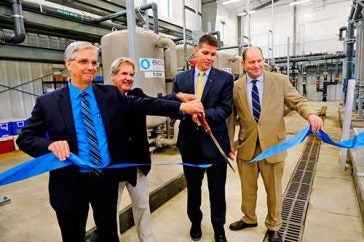
In May of 2014, the well supplying the Pease public water system (PWS) in Portsmouth, New Hampshire, was shut down after PFAS levels were discovered exceeding the U.S. Environmental Protection Agency’s guidelines. The source of contamination is thought to be from the firefighting foams used on the former Pease Air Force Base, now known as the Pease International Tradeport. The Pease PWS services the International Tradeport, and 8,000 workers and civilians that frequent the Tradeport are thought to have been exposed to PFAS through drinking water since 1993, when fire training began at the base. Shortly after the contamination was discovered, state and federal agencies, including The U.S. Agency for Toxic Substances and Disease Registry (ATSDR), began studies to determine the health outcomes of this long-term exposure.
The ATSDR’s final health consultation report was released on March 20, 2020. The investigation evaluated the public health implications of PFAS exposure on workers at the Pease Tradeport and children attending two childcare centers there. The study found that individuals exposed to drinking water from the Pease PWS between 1993 and 2014, when the well was shut down, might be at increased risk for some harmful non-cancer health effects such as developmental and immunological diseases.
The final report incorporates responses to comments received from the public comment fact sheet, which was released in April 2019. Although the well supplying the Pease PWS was shut down and filtration systems have since been installed, low levels of PFAS remain in the water. Consuming water containing low levels of PFAS at Pease is not expected to harm people but as a public health measure ATSDR recommends that individuals who have had long-term exposures to PFAS should reduce further exposures.

